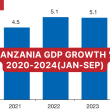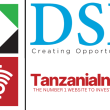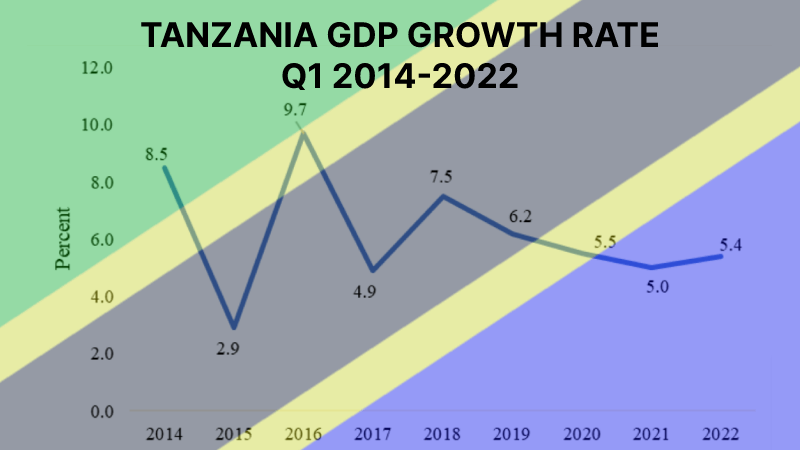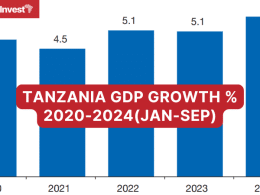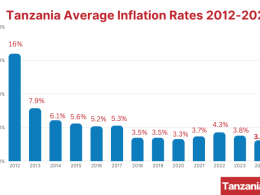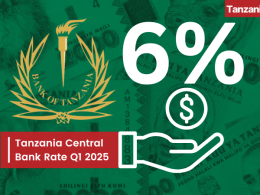The National Bureau of Statistics of Tanzania (NBS) recently released its Highlights On The First Quarter Gross Domestic Product (January – March) 2022 (Base Year 2015), revealing that in absolute terms at current prices, the country’s GDP increased to TZS 43.4 trillion from TZS 38.9 trillion in the corresponding quarter in 2021.
Moreover, the First Quarter Real Gross Domestic Product increased to TZS 34.9 trillion in 2022 from TZS 33.1 trillion in 2021 equivalent to a GDP growth rate of 5.4%, (5.0% in the similar period in 2021).
GDP Growth in East Africa in Q1 2022
The countries in the East African Community (EAC) that have released reports for the first quarter of 2022 show continuous economic recovery during the period under review.
Rwanda’s economy expanded to 7.9% in Q1 2022 up from 3.5% in Q1 2021; Uganda’s economy expanded to 5.9% from 3.0%, and Kenya’s economy increased to 6.8% from 2.7%.
Tanzania’s GDP by Economic Activity, Q1 2022
During the period of January to March 2022, the analysis of economic activities by Broad Economic Classification (BEC) indicates that Primary Activities accounted for the largest share of GDP with 39.5%, followed by Tertiary activities with 38.2%, and Secondary activities with the least share of 22.3%.
Economic activities that significantly contributed to the growth include Agriculture (19.6%), Construction (14.1%), Manufacturing (9.0%), Construction (14.1%), Manufacturing (9.0%); Mining and Quarrying (7.1%); Trade and Repair (6.7%); and Finance and Insurance (6.4%).
The Agriculture, Forestry, and Fishing sector attained a growth rate of 3.9% in Q1 2022 down from 5.3% achieved in the similar period in 2021.
Crop production expanded by 3.9% in the first quarter of 2022 compared to 1.4% recorded in the corresponding quarter in 2021 as a result of the use of technology and inputs, conducive weather in areas of production improved extension services attributed to the attained growth rate.
Major crops that accounted for the performance of the activity included an increase in paddy production by 18.9% from 465 thousand tons in 2021 to 553 thousand tons in 2022; beans and pulses increased by 3.0% from 167 thousand tons in 2021 to 172 thousand tons in 2022; maize harvested increased by 2.6% from 2.7 million tons in 2021 to 2.8 million tons in 2022; and sweet potatoes increased by 0.9% from 342 thousand tons in 2021 to 345 thousand tons in 2022.
Water Supply and Sewerage Services attained the highest growth rate of 11.9%; followed by Finance and Insurance (10.0%); Other Social Services including Arts and Entertainment, and Household Activities as Employer (8.5 percent); Mining and Quarrying (8.5%); Electricity (8.3%), Information and Communication (8.0%); and Public Administration and Defense (6.1%).



